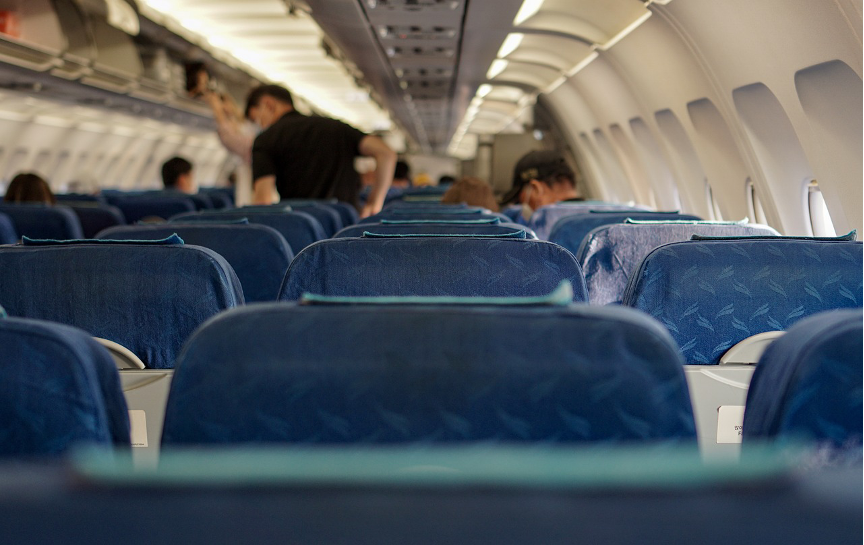Long-haul flights, especially international ones, can be both exciting and exhausting. Spending several hours on a plane means facing the challenge of staying comfortable and, ideally, catching some sleep. The idea of taking a nap until landing is appealing, but often it turns out to be harder than expected due to numerous factors that can disturb your rest.
If you’ve ever found yourself tossing and turning in your seat, struggling to find a comfortable position, or anxiously watching the clock, you’re not alone. Sleeping well on a plane isn’t impossible, but it does require some preparation and a few key strategies. Here’s a practical guide to help you maximize comfort and improve your chances of getting a good rest during a long flight.
1. Prepare for sleep before the flight
The best way to ensure a restful sleep on a plane is to start preparing before you even board. Avoid stimulating beverages like coffee, black tea, or energy drinks. While it may be tempting to load up on caffeine to stay alert before takeoff, this will only make it harder to relax once you’re in the air. It’s better to skip the coffee and let your natural fatigue work in your favor.
If you often have trouble sleeping in unfamiliar or noisy environments, it can also help to adjust your sleep schedule a few days before your trip. Try gradually shifting your bedtime and wake-up time to match the time zone of your destination, which can make the transition easier once you’re airborne.
2. Choose the right seat on the plane
When booking your flight, choosing the right seat is crucial for comfort. If your goal is to sleep well, avoid the back rows of the plane. These seats often don’t recline fully, and being near the toilets means constant foot traffic and noise. Instead, opt for a window seat. Not only will you have a wall to lean against, which can help you find a more comfortable position, but you’ll also avoid being disturbed by passengers getting up to use the bathroom.
If possible, try to book a seat near the emergency exits. These seats typically offer more legroom, allowing you to stretch out and find a more relaxed position for sleeping. However, make sure to check any restrictions, as some exit row seats may have limitations on how far they can recline.
3. Must-have gear for sleeping well on a plane
To maximize comfort and help your body relax, there are a few essential items you should bring with you:
- Sleep mask: A sleep mask is essential for blocking out the artificial light inside the plane, which can stay on for long periods, especially on overnight flights. It helps create a more bedroom-like environment, promoting relaxation.
- Earplugs or headphones: Planes are rarely quiet. The hum of the engines, conversations between passengers, or a crying baby can all disturb your rest. Earplugs work wonders in reducing noise. Alternatively, you can listen to soothing music or nature sounds through headphones to help drown out distractions.
- Travel pillow: A neck pillow is essential to prevent waking up with neck pain caused by awkward sleeping positions. Opt for an ergonomic pillow that provides proper support for your head and neck.
- Toiletries for freshening up: Bring a toothbrush and a small toiletry kit with you. Washing your face and brushing your teeth before attempting to sleep can have a calming effect, recreating some of the bedtime rituals that help you wind down at home.
4. Practical tips for relaxing during the flight
Once you’re on board, there are a few additional tips that can help you relax and improve your chances of falling asleep:
- Don’t watch the clock: One of the most common mistakes is repeatedly checking the time and calculating how long is left in the flight. This only increases tension and makes it harder to unwind. Let time pass naturally and don’t focus on the clock.
- Avoid checking the flight map: Many long-haul flights offer an interactive map showing the plane’s current location and how much time remains. However, constantly monitoring it can add to your anxiety, especially if you’re struggling to fall asleep. Instead, focus on relaxing activities like reading or listening to calming music.
- Skip the alcohol: While you might think a glass of wine or a cocktail will help you relax, alcohol can actually have the opposite effect. Though it may make you drowsy at first, it disrupts the deeper stages of sleep, causing you to wake up more frequently and leaving you feeling more tired when you do wake up.
5. Use fatigue to your advantage
If you know you’re going to be on a long flight, try not to sleep before the trip. This is especially helpful for overnight flights. If you can stay awake during the day, you’ll be more likely to fall asleep as soon as you sit down. This way, you can make the most of the flight time and also reduce the impact of jet lag when you land.
6. Don’t Forget Currency Exchange
Before you depart, in addition to preparing everything you need for the trip, it’s important to remember to take care of your currency exchange. If you’re traveling to a country with a currency different from the euro, like the U.S. or Japan, you can easily book your currency exchange in advance. You can do this online through Forexchange, even selecting specific denominations, and pick up your money conveniently at the airport before departure.
7. For a Stress-Free Return
After spending hours or days traveling, getting back home is often accompanied by the desire for a smooth return. With Fx Buy Back from Forexchange, you can sell back any leftover foreign currency at the same exchange rate at which you bought it. This way, you won’t have to worry about what to do with any remaining foreign cash.
For a seamless travel experience, don’t forget to download the new Forexchange currency exchange app, available on both the App Store and Google Play. With the app, you can easily manage your currency exchange needs, select the denominations you prefer, and even take advantage of exclusive discounts. Have a great trip!
Photo Credits:
juno1412, Pixabay









